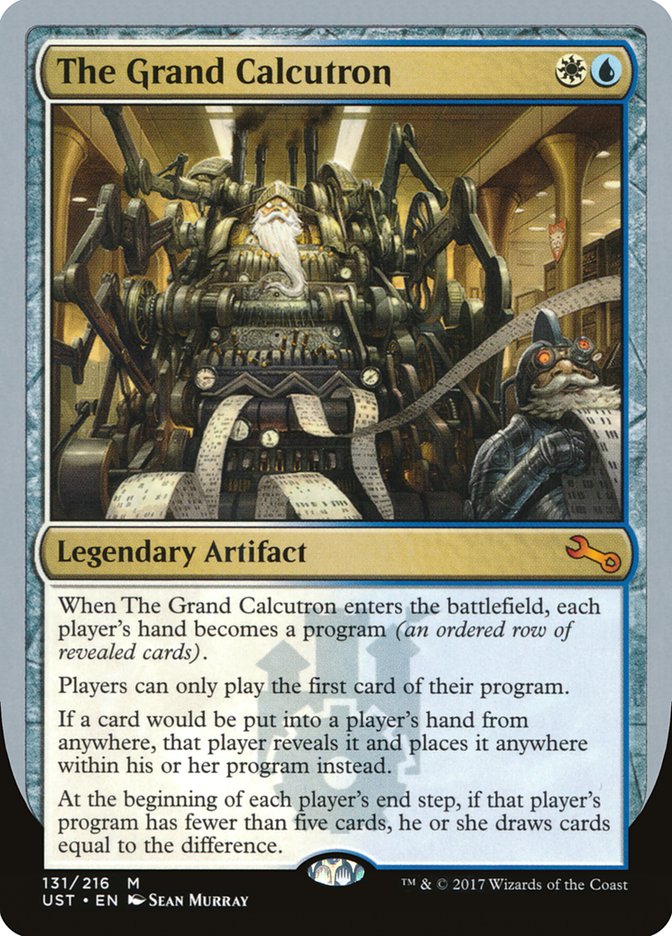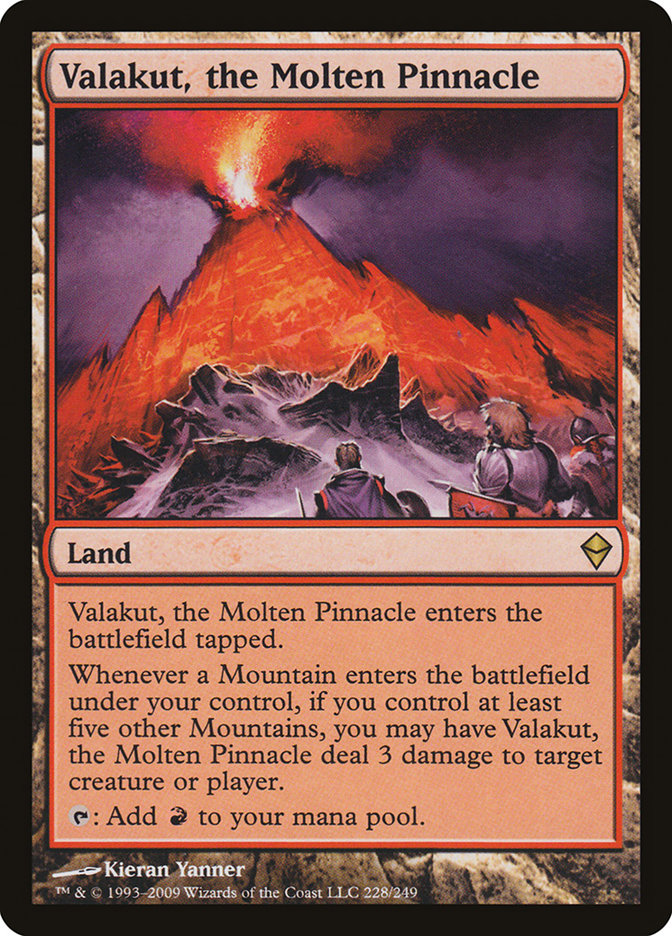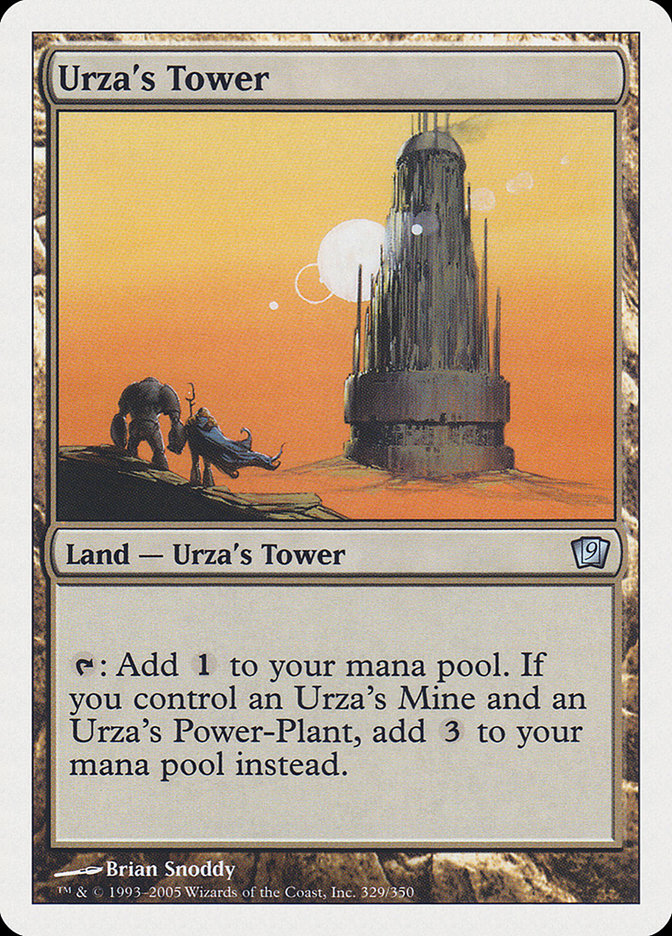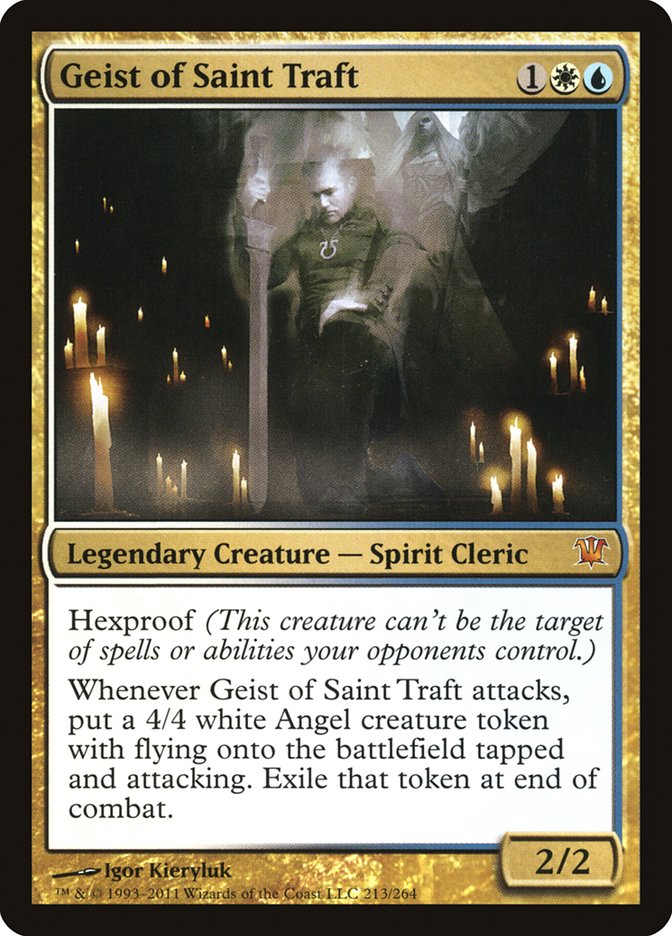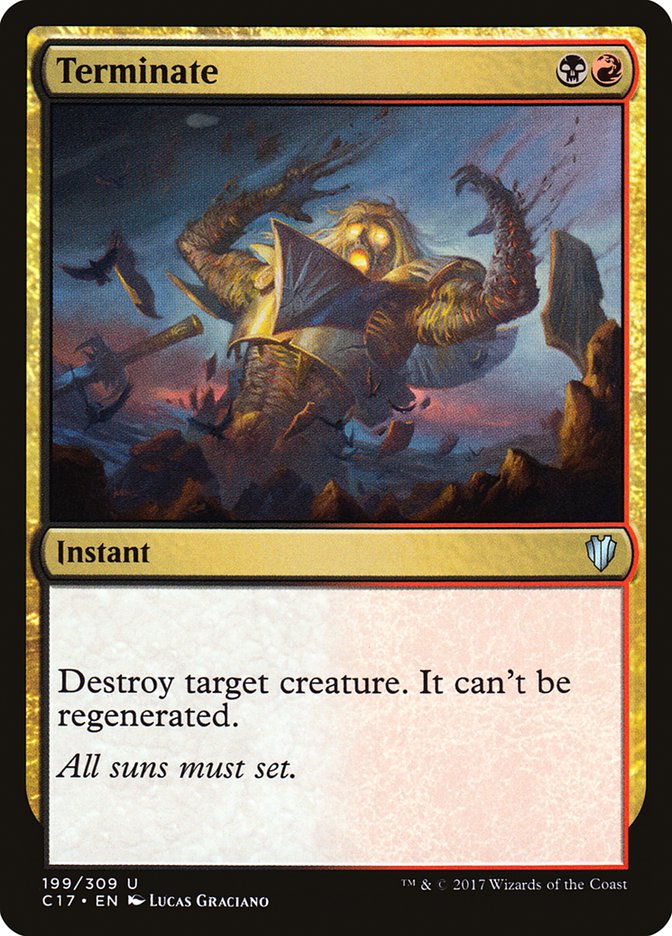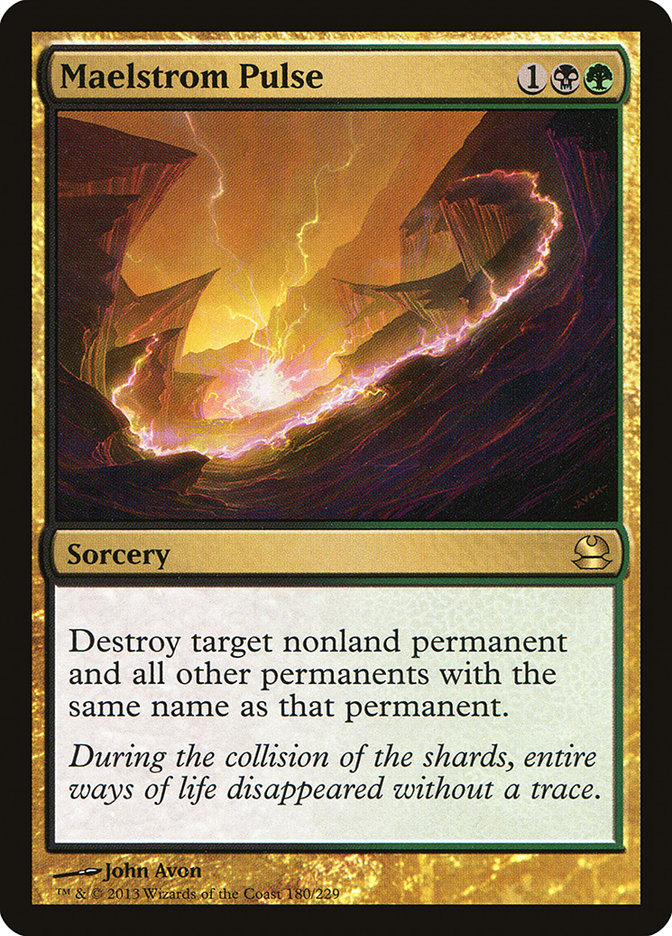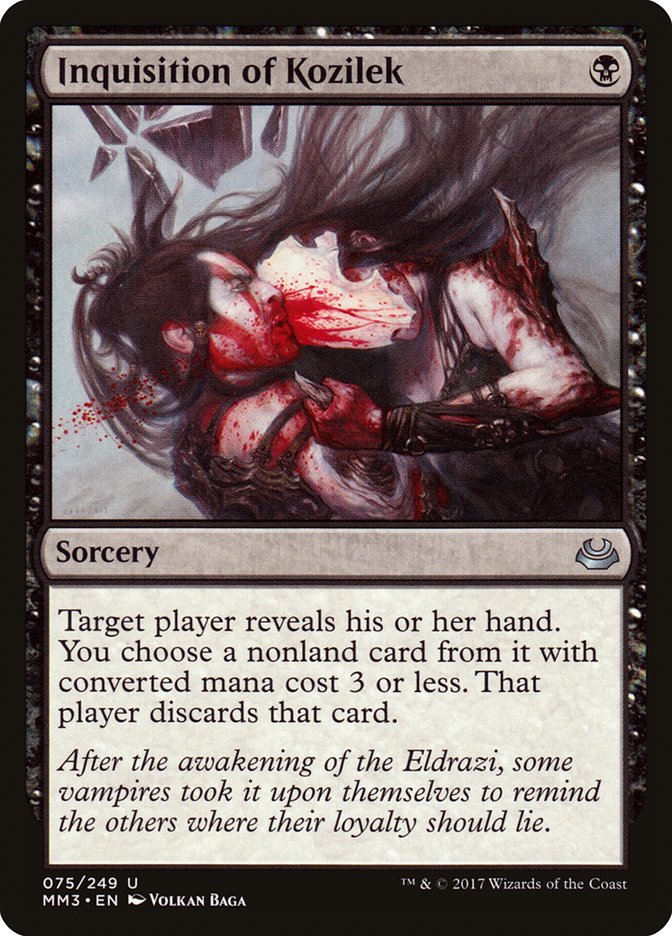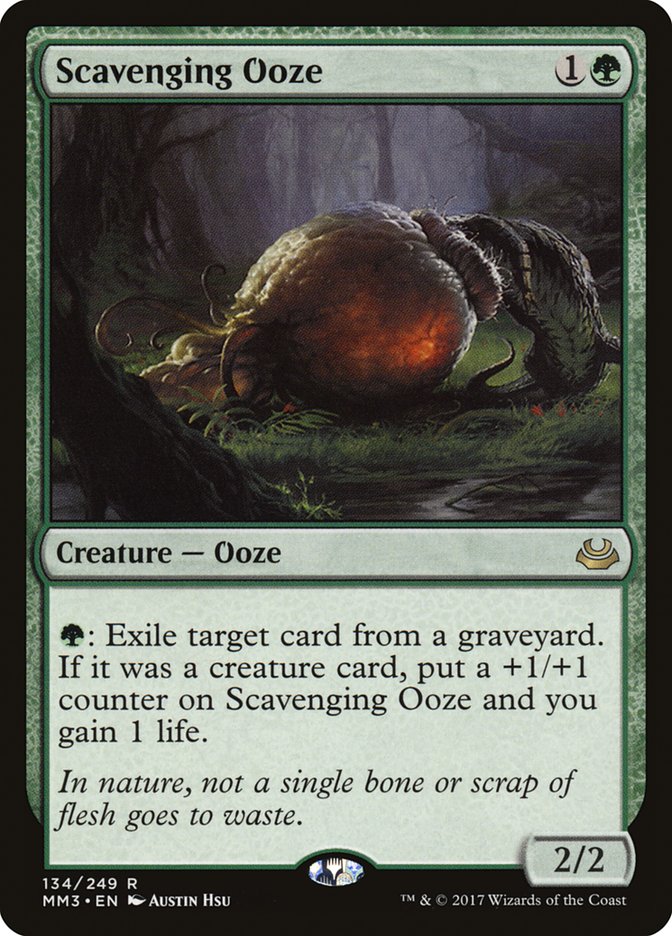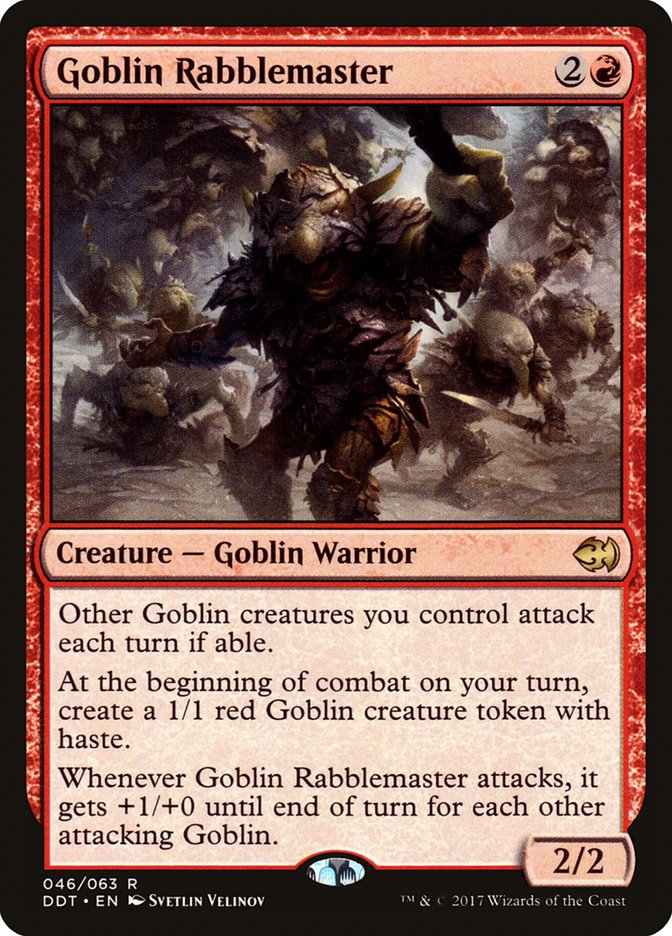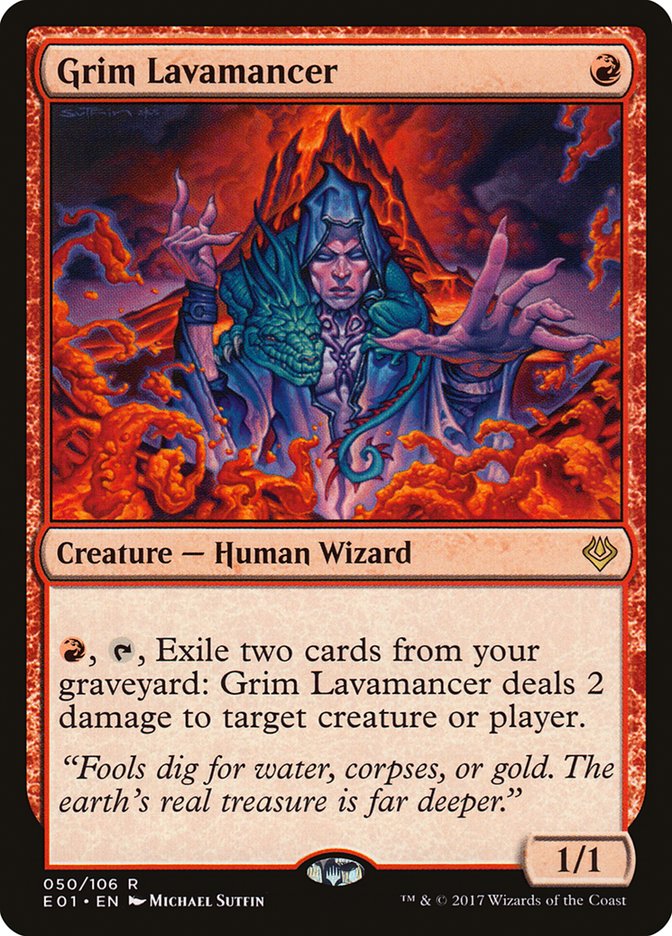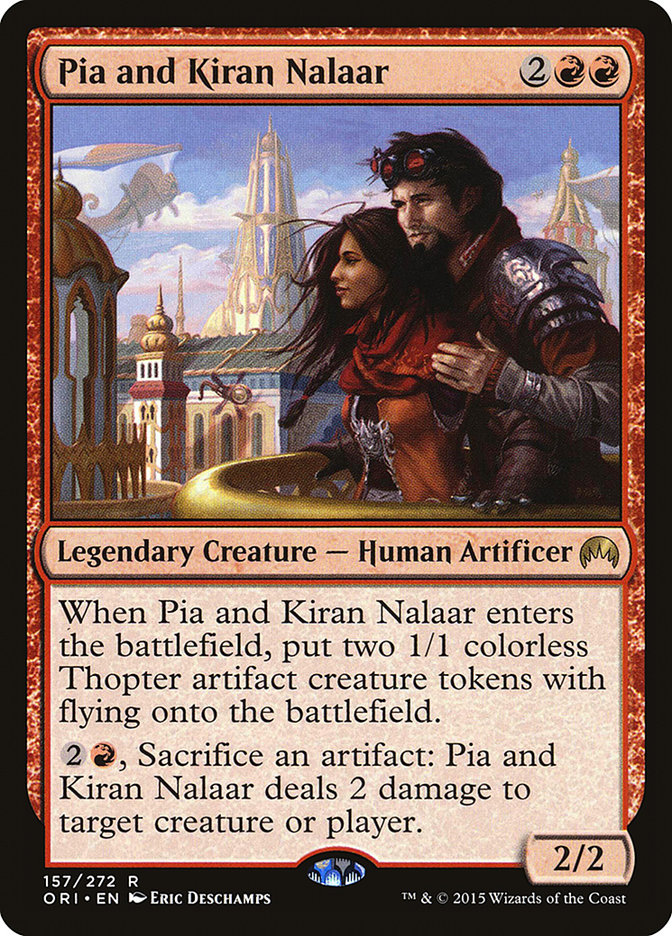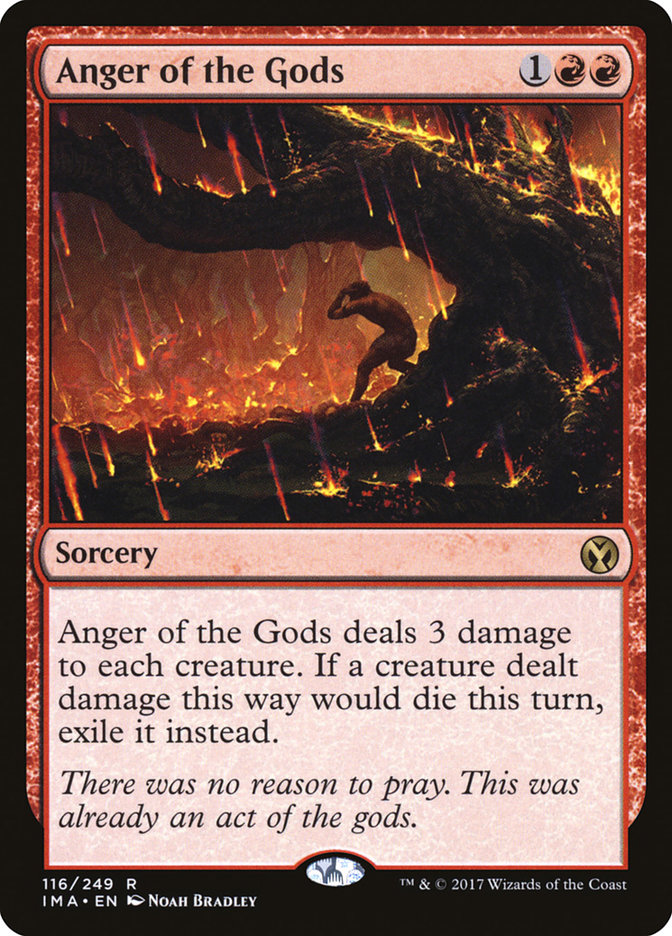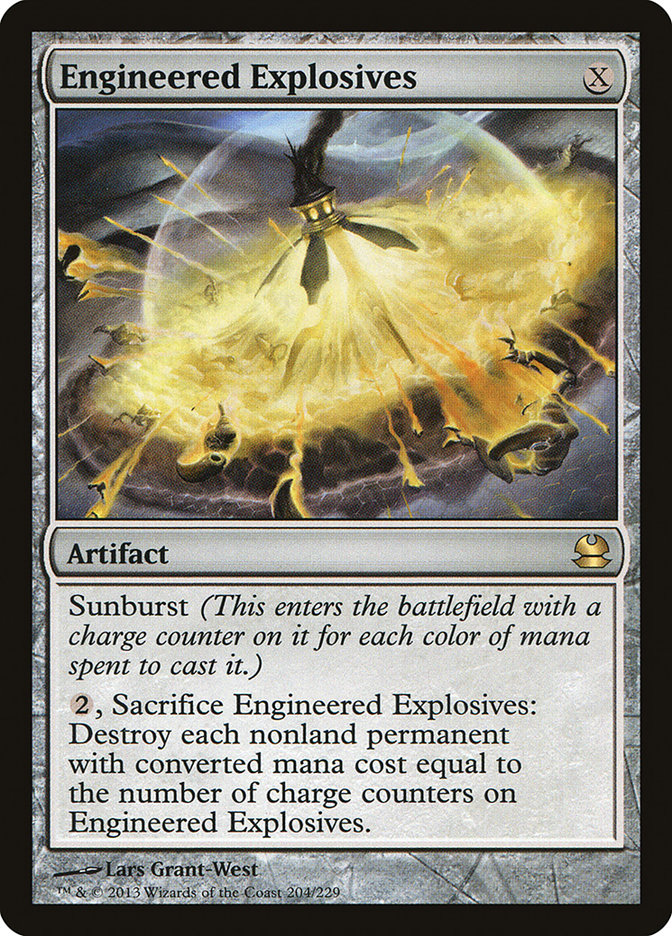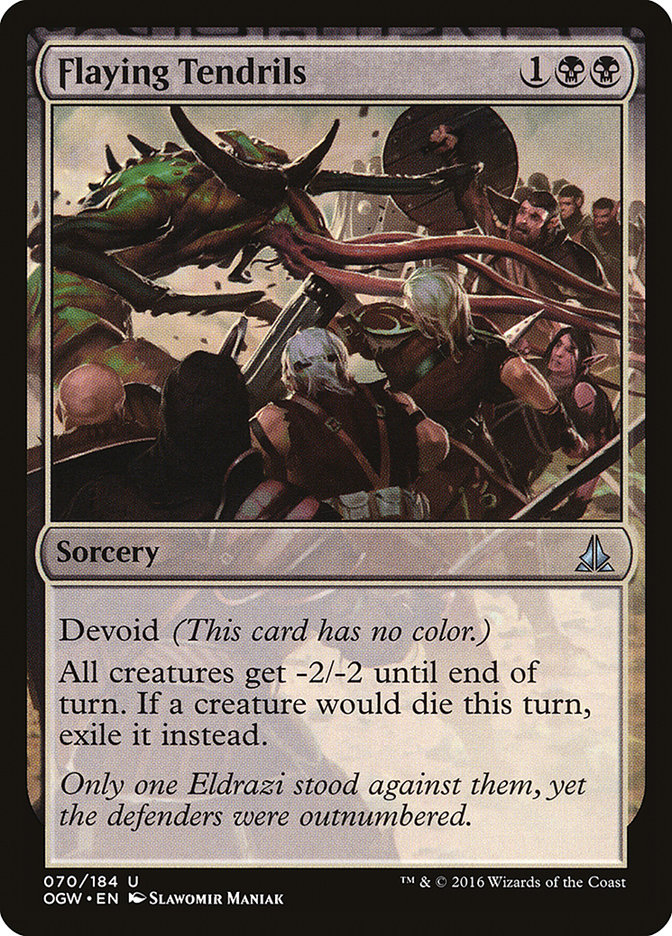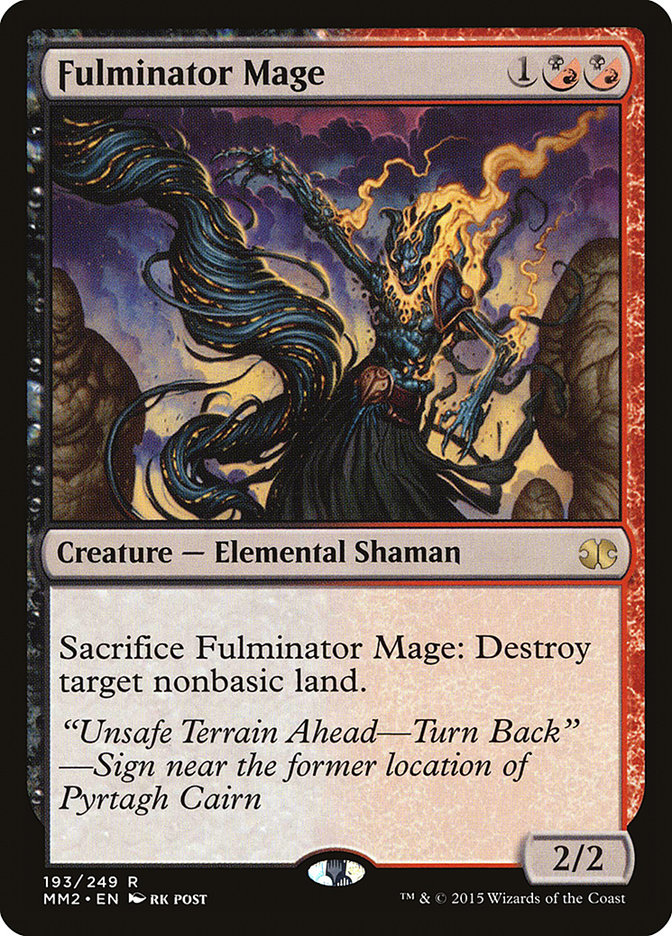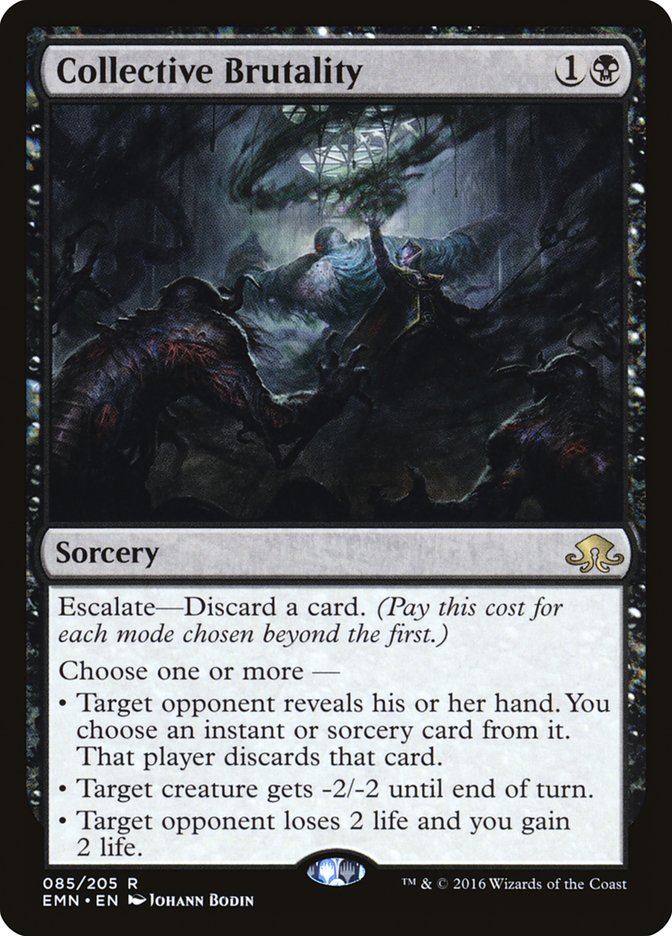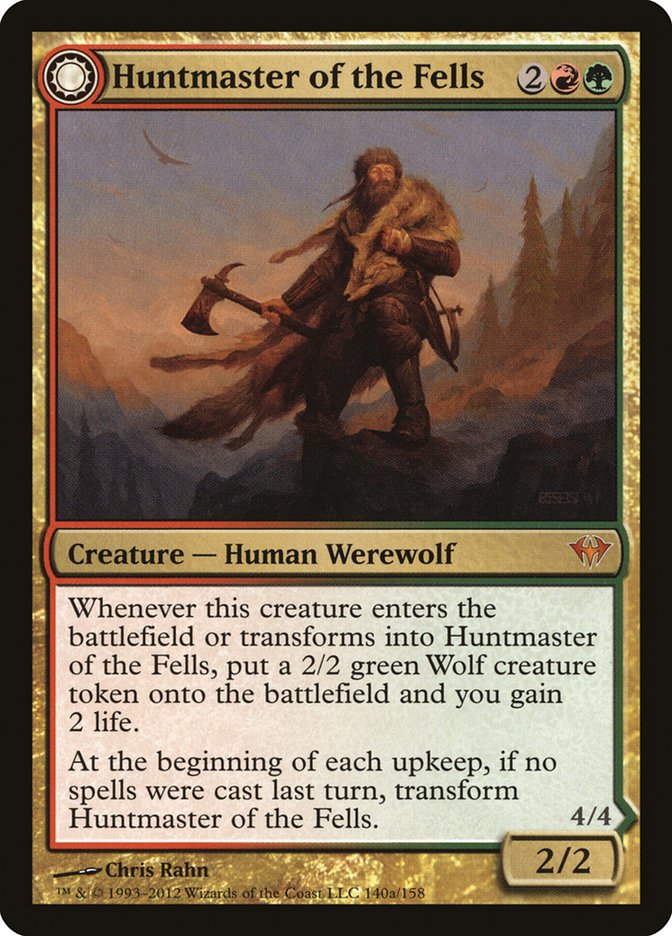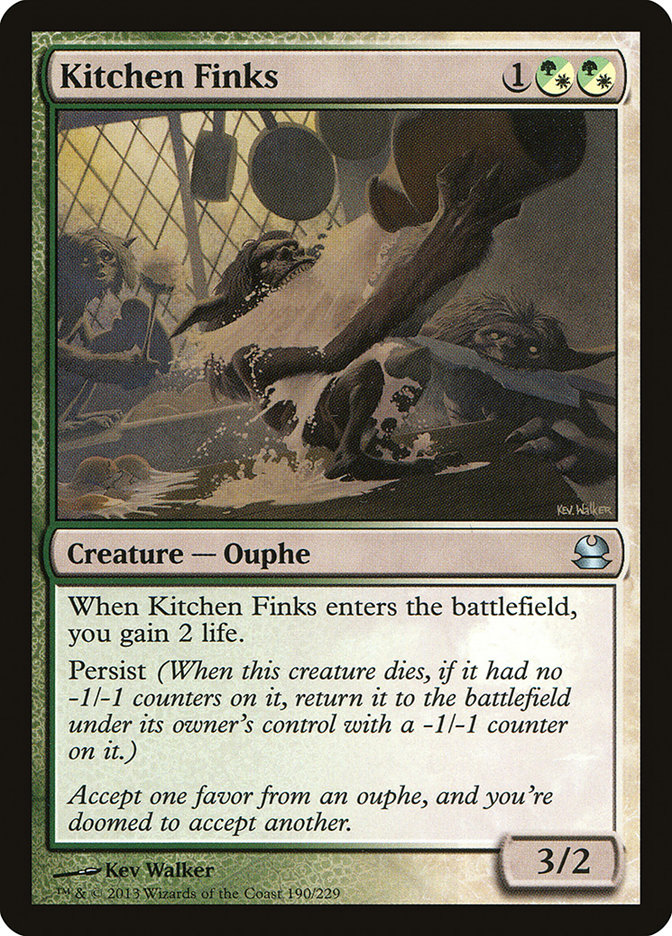There are a lot of good reasons to play decks you know well in Modern. At the most fundamental level, you gain percentage points by simply knowing how to play the deck and not making basic sequencing or mulliganing mistakes. Past that, you gain a lot of equity from understanding all of the matchups and knowing what you have to do to squeeze out a win in all of them, no matter how unfavored they might be on paper.
But the biggest edge that comes from playing a deck you know inside and out is being able to tune it precisely for the field you expect. Because you understand all the interlocking parts of the deck, you know which parts you can amplify to give you a better game against certain strategies, which parts are essential and can’t be touched, and what matchups are weakened by every card you touch.
Tuning a deck is a lot like fiddling with settings on a complicated machine. Pull that lever, and X matchup gains three percentage points while Y matchup loses five. Twist that knob a little and you’ll gain two points here but lose a point there. When you don’t know the deck you’re tuning, it’s like you’re pulling levers and twisting knobs without having any idea what they do, or knowing only what matchups will be helped and not which will be hurt.
Playing a deck for a while and truly understanding it is like having access to the instruction manual for the machine. Sure, it’s still complicated. But with the manual, it goes from being an impossible task to an interesting puzzle, from arcane secrets to real science. You still have to know what to tune the deck for, but if you have a good idea of what to expect, the tournament is your oyster.
Why Play Jund?
Obviously this is all building up to me saying I know Jund very well and talking about how it should be built for the current Modern metagame. But before we dive into those specifics, let’s talk a little about why we might want to play Jund right now.
As I talked about last week, my approach to deck selection in Modern is to think about which decks are at a low point in play and choose a deck that is bad against these decks that I don’t expect to see. So what are the decks on a downtick that are good against Jund?
Historically, Modern Jund’s worst matchups are land-based combo-esque strategies. Lands are a permanent type that Jund can’t interact with well, and the land strategies progress the game to a point where a single card off the top can end the game, and they do so by simply making their land drop every turn, which is something that no amount of Liliana of the Veil upticks can stop from happening. With interaction very difficult, the next thing to turn to is to kill them before they kill us, which is also something that Jund isn’t great at.
So Valakut decks are bad news. Thankfully for Jund, my take is that Valakut decks are not well-positioned right now. Fast combo and fast linear aggro strategies are the name of the game right now, and decks like U/R Storm and Affinity are all at least half a turn faster than Scapeshift decks.
The results of #SCGBALT back my intuition up here: none of the top 27 teams in the Open had their Modern player on a Valakut deck, and only one Valakut deck made the Top 16 of the Modern Classic that weekend. As a Jund player, I’ll take those odds.
Sadly, the news isn’t as good when it comes to the other major land-centric deck in the metagame: Tron. In fact, this era of Eldrazi Tron might be the actual most play Urza’s Tower and friends have ever seen (don’t quote me on that; my historical format knowledge isn’t very good). Regardless, it’s foolish to think you can go deep into a Modern tournament right now without facing Eldrazi Tron a time or two along the way.
But here’s the good news: Eldrazi Tron is nowhere near the nightmare for Jund that classic G/R or G/B Tron can be. I’m not going to claim that the matchup is good for Jund or anything, but it’s decidedly fine. Jund is a little behind, but a little behind is a much better place to be than a lot behind, which is where the classic Tron matchup is.
The difference, for the most part, is that Jund can beat a Thought-Knot Seer. It can beat a Reality Smasher. Eldrazi Tron plays far fewer nearly unbeatable haymakers like Karn Liberated and Wurmcoil Engine, and it doesn’t make your removal atrocious. Terminate is a very good card against Eldrazi Tron, and it just isn’t against classic Tron.
Of course, just because most Urza’s Tower players are on Eldrazi Temple as well doesn’t mean they all are. Classic Tron is still floating around out there, waiting to prey on poor, unfortunate Jund players. That’s just kind of Modern. Every deck has bad matchups. Classic Tron is at a historical low in terms of play, and that’s good enough for me.
The Target
All right, so we’ve decided we’re playing Jund. What should the list look like?
It’s important to have a target, something to base our decisions around as we tune the list. Right now in Modern, my primary target class is aggressive creature-swarm decks. Humans and Affinity are the two big decks I’m thinking of here, but aiming for those does a lot of splash damage against creature-combo decks like Counters Company. My secondary target is high-resource combo: decks like U/R Storm, Burn, and Through the Breach that require a threshold number of resources or a specific combination of resources to be able to kill you.
Two targets is really about as far as I want to go, as going much farther gets into “have your cake and eat it too” territory, where you are theorizing about how you can beat more decks than you realistically can. Something has to give, and to gain in one matchup, you have to lose in another. That being said, my tertiary target, for the few times a decision makes it past the first two, is the Jeskai deck.
I think the Jeskai versus Jund matchup is one of the most polarizing in Modern in terms of how people think it plays out. It depends a lot on how both players approach it and how the decks are constructed. Given the current popular configurations of Jeskai, I tend to think the matchup is good for Jund right now, but I know a lot of players I respect who would vehemently disagree with me.
The Removal
Historically, Jund hovers somewhere around eleven to thirteen pieces of removal in the maindeck. Let’s go through the options.
Before the printing of Fatal Push, the decision of what and how many one-mana removal spells to play was easy: all of them. Now, it’s harder. Eight is definitely too many, but you do want more than four. I could see anything from five to seven being right, depending on what you want to beat.
Right now, with our primary target being small creature decks, erring towards the high end of that spectrum sounds ideal. Once we decide we are playing seven one-mana removal spells, the question that’s left is whether we cut a Lightning Bolt or a Fatal Push.
Pictured above are the two biggest reasons to play Fatal Push over Lightning Bolt. Neither one is in the decks we’re trying to beat. Admittedly, both Affinity and Humans can grow things out of Lightning Bolt range, which can make Bolt an awkward topdeck. That being said, Lightning Bolt is so much better against both our secondary and tertiary targets by virtue of being able to kill players and Spell Quellers that I think running the full set of Lightning Bolts is correct right now.
The two-mana removal spells are not very exciting against our chosen targets. Sure, they can kill things against the creature decks, but spending two mana to do so often means we’re trading down on mana. Past bad trades, though, the way we beat these small creature decks is by double-spelling as soon as possible, and two-mana spells are not great at that.
So for me, looking at the two-mana removal spells is an exercise in figuring out how much I can trim without sacrificing too much across the board. The answer I’ve arrived at is to play four of these spells, split three Terminate to one Abrupt Decay. Going so low on Abrupt Decay feels really awkward for a B/G Modern deck, but the noncreature permanents it hits are at a low and there are a lot of delve threats floating around.
Finally, the three-drops. Maelstrom Pulse is a catch-all that makes you feel safe and punishes your opponent for good deckbuilding. I don’t want to feel safe right now. Maelstrom Pulse is not good against any of the target decks, and I think now is the time to cut it entirely.
Kolaghan’s Command is decidedly fine. It adds to your threat count ever-so-slightly and always two-for-ones. It’s an absurdly good card against Affinity and a fine card against the other target decks. We already have eleven removal spells, so I’m comfortable taking two Kolaghan’s Commands and heading up to thirteen overall.
The Hand Disruption
The Jund hand disruption plan is really important to beating the secondary target decks, but for all of that, I don’t actually have a lot to say about it. You see, the decisions are kind of easy.
We’re playing four of this card. Get out of my face with talk of splitting her with Liliana, the Last Hope. Veil is our best card in a lot of matchups right now. She’s a large percentage of the reason I want to play Jund .
To be fair, though, she is not good against the primary target decks. But she is the reason we have a good matchup against the secondary and tertiary decks, as well as a lot of the decks that people play but we’re not focusing on. She’s a huge source of the raw power of Jund. If you want more on this topic, I talked about Lili a few months ago in the context of another B/G deck, Abzan Traverse.
Here’s the real hand disruption question: how many and which discard spells do we play? The classic correct answer is six, maxing on Inquisition of Kozilek. Recently, I’ve been playing seven while maxing Thoughtseize. I was more concerned with what is now our secondary target than the creature decks that we care about today.
For this decision, our primary and secondary targets push us in opposite directions. Against U/R Storm, we want every discard spell we can get our hands on, and we want as many of them to be Thoughtseize as possible. Against Humans and Affinity, Thoughtseize is a liability.
Since Humans and Affinity are our focuses right now, I’m comfortable going back to the classical four-two split. However, I’m very interested in having all four Thoughtseize in the 75, but we’ll get to that later.
The Threats and the Lands
The rest of our maindeck decisions come down to what threats to play and how many lands to run. These decisions are linked.
These form the core of our threats. The only decision dealing with these cards is how many Scavenging Oozes to play, as we are for sure playing four copies each of Tarmogoyf and Dark Confidant. Almost always, either two or three Scavenging Ooze is the right answer. Given that we are aiming for creature heavy decks and that our secondary targets include Burn and U/R Storm, I know I want three Scavenging Ooze right now.
That’s eleven threats so far. We want either thirteen or fourteen, and either 23 or 24 lands. Those following along with the math of our removal and hand disruption will realize that we have 37 slots remaining, which is the correct number for either thirteen creatures / 24 lands or fourteen creatures / 23 lands.
Essentially it comes down to this: if our last few threats are four-drops, we want 24 lands. If they aren’t, we want 23.
If you’ve been listening to things I’ve said about Jund lately, you probably know that I’ve been advocating for Goblin Rabblemaster. I firmly believe that Goblin Rabblemaster was a good card in the deck for the metagame I wanted to beat, but things have changed.
You see, Rabblemaster is pretty awful against the creature decks. If the Goblin tokens aren’t sticking around, the card just isn’t good. Due to the small size of most of Affinity’s creatures, Rabblemaster is passable there, but against Humans it’s just miserable. Like, Mantis Rider even has vigilance. Gross.
So now that we’re trying to beat these creature decks, I’m off Rabblemaster. There’s a lesson in there about being able to cut pet cards and recognize when your actual good ideas are no longer valid, but I’m not going to beat you over the head with it.
So it’s back to the drawing board for our last few threats. I’ll be honest: I’m not completely sure what the answer is. Here’s my short list:
Right now, I’m leaning towards two Kalitas, Traitor of Ghet. That means 24 lands. I normally like playing Slaughter Pact with Kalitas, but that card is so embarrassing against Grixis Death’s Shadow that I don’t think you can afford to play it. Kalitas is excellent against the creature decks we want to beat but not very good at all against our secondary targets (with the exception of Burn). Still, sometimes just having power is good enough against U/R Storm. Oh, and having four toughness is really good against Jeskai.
My runner-up configuration is two Tireless Tracker and a single Grim Lavamancer (and 23 lands). Grim Lavamancer is very good against the aggressive creature decks we’re targeting in theory, but my experience is that you need other things to be going right to get the cards in the graveyard Lavamancer needs to do anything. Essentially, Lavamancer’s issue is that if it’s the only removal spell you drew, you didn’t draw any removal spells.
Tireless Tracker plays really well with excess fastlands, as a Turn 4 of Tireless Tracker plus a tapped fastland is not embarrassing. Not ideal, but not embarrassing. That said, I’m not sold that Tracker is actually good at anything. It’s not fast enough to pressure the combo decks, and it’s not a good blocker against the creature decks. Puts you ahead in midrange mirrors, but where are the midrange decks these days?
Finally, Pia and Kiran Nalaar is a card I like a lot. Flying blockers are great against Affinity and the card stabilizes battlefields like no other. It gets edged out for me by Kalitas, but I wouldn’t fault anyone for playing Pia and Kiran.
One last note: playing 24 lands is not completely a concession to wanting to run four-drops. A smoother mana curve and slightly more pain-free manabase are actively good against our primary target. In 23-land configurations right now, I think you have to go down to two Raging Ravine to ensure you play on-curve often enough to compete with the creature decks, and that’s not something I particularly want to do.
The Sideboard
When tuning a deck with this method, I’m not interested in jamming my sideboard full of things that are also good against my targets. The idea is to beat those decks, not demolish them. In a field as wide as Modern, you still have to have game against the whole metagame, so cards for your targets in the sideboard should be minimal, and only cards you couldn’t get away with playing in the maindeck.
One such class of card that you can’t play in the main is sweeper effects. Sweepers tend to be quite good against our primary target, and we very likely want access to some number of them post-sideboard.
You could make a good argument for a lot of different sweepers right now. You want your sweeper to double as an answer to Empty the Warrens for the Storm matchup, especially since this build cut Maelstrom Pulse. Since the sweeper is coming in against Storm, I want it to be able to kill Baral, Chief of Compliance. That rules out Flaying Tendrils for me.
I think the number of sweeper effects that you want is two. My choice right now is double Engineered Explosives. Anger of the Gods plays poorly with Kalitas and getting timely access to double red mana generally involves taking pain, which is bad in the matchups where you want to cast a timely Anger of the Gods. Explosives lets you commit to the battlefield yourself without fear and, since it’s coming in against Storm to answer Empty the Warrens anyway, can be an artifact to increase your Tarmogoyf clock. Niche for sure, but far from useless.
Liliana, the Last Hope is excellent against one-toughness creatures. That makes her very good against Humans and Affinity and every mana-creature deck. I wouldn’t want to play her main, but I’m happy having a copy in the 75.
Graveyard hate is good against U/R Storm, and we want to beat Storm. Further, we need to hit graveyard hate cards in some matchups, like Dredge, to have any chance of winning. My preference is to lean towards Nihil Spellbomb with a sprinkling of Grafdigger’s Cage. I’d play more Cages, but drawing two is very bad.
Just like Engineered Explosives, Spellbomb being an artifact going to your graveyard for Tarmogoyf is a nonzero boon to your Storm matchup. Spellbomb is also the most flexible card of the bunch, being a very passable substitute in matchups where you just need to get a bunch of cards out of your deck. I don’t mind drawing multiple Spellbombs in a game.
I’ve settled on four graveyard hate cards as the number I want. Graveyard decks have been kind of quiet lately in Modern, and if this is the weekend they surge back up, I don’t want to be unprepared. And if not, my Storm matchup will thank me regardless.
Don’t play Blood Moon. I’m not sure it’s even good against Eldrazi Tron, and the plan is to beat Classic Tron and Scapeshift by dodging them.
There’s a similar argument to be made for Fulminator Mage, with one caveat: I think Fulminator is excellent against Jeskai. Further, Fulminator plays really well with Kolaghan’s Command, letting the first copy you draw have a huge impact on the game. Don’t play more than two, but one or two is super-reasonable.
Thoughtseizes number three and four fit into the category of cards that are good against my target, in this case the seconday target, that I don’t think I can get away with playing in the main. I want them badly and suspect they are actually our best sideboard cards against U/R Storm, diminishing returns or no diminishing returns (the economics law, not the card). They also help a great deal against our not-so-good matchups, like Eldrazi Tron.
Collective Brutality is close to a targeted Burn hate card at this point. I’m down to one copy, mostly because it is very flexible and fine in a lot of matchups. Jund is the kind of deck that often has a lot it wants to take out after Game 1, and having flexible sideboard cards that let you get to 60 cards you don’t hate playing for Games 2 and 3 is important.
Finally, the last choice is what creatures to play. I like Goblin Rabblemaster enough that I want access to it post-sideboard when I’m not playing against a creature deck. The best way to beat the non-interactive decks is to kill them, and the best way to kill them is Goblin Rabblemaster.
I have no copies of Huntmaster or Kitchen Finks, and the reason is that those cards are good against the decks we’re already working to beat. I don’t want to overload on my game against the aggressive creature decks.
Finished Product
Creatures (13)
Planeswalkers (4)
Lands (24)
Spells (19)

I’m not 100% locked-in on Jund for the #SCGINVI, but that’s mostly because I like to tell myself that I’m flexible and could switch if one of my testing partners makes a convincing argument or finds something great. In reality, I’m kind of stubborn, so odds are I will be battling with Jund this weekend. My list may not be this exactly, but I’m fairly certain it will be close.
After tuning a list, it’s good to reflect a moment on what you gave up in order to beat the decks you wanted to beat. Going down to one Abrupt Decay and no Maelstrom pulse hurt a lot of our fringe matchups like U/W Control and various Ensnaring Bridge decks. Playing four copies of Lightning Bolt leaves us in a worse spot against Grixis Death’s Shadow. This is the weakest version of Jund I’ve ever played against Scapeshift and Tron.
Turns out, I’m fine with all of that. Guess the tuning went okay.


